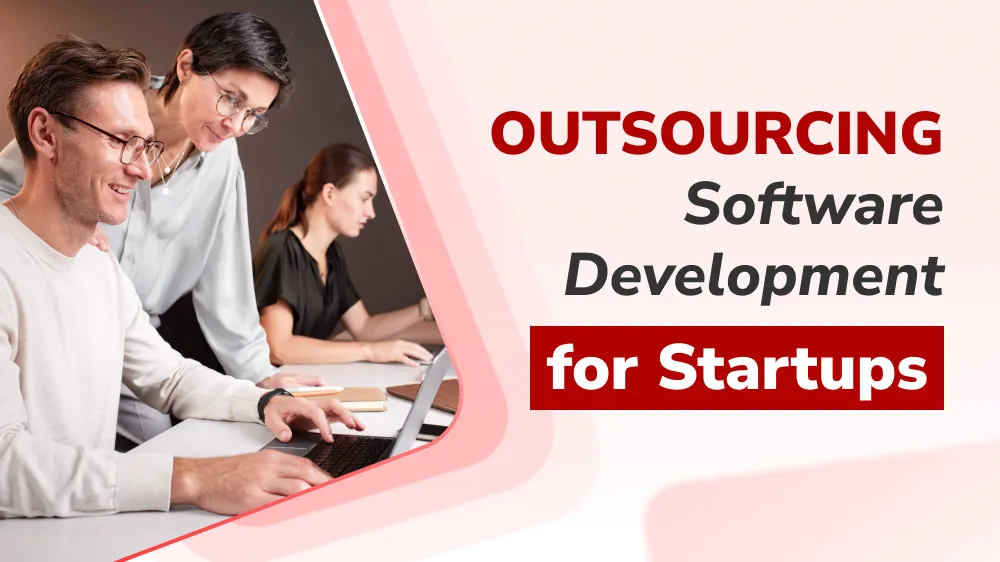Eight Pragmatic Solutions to Outsourcing Problems – The Most Common Ones

Content Map
More chaptersIt is no secret that businesses are increasingly relying on software outsourcing services as a means to get their projects off the ground and enjoy cost savings, access to a broader talent pool, and quality deliverables. Startups, small, middle-tier, and large companies alike succeed in reaping the promised rewards of outsourcing. But all too often, the transition is accompanied by a series of problems. Fortunately, these obstacles are avoidable if you 2get proper solutions in place. Let us lead you through some of the most prevalent outsourcing issues, as well as the workarounds for each.
8 Most Common Software Development Outsourcing Challenges & How to Tackle Them
Fortunately, if you put the necessary safeguards or fixes in place, you can avoid these difficulties. Let’s walk through a few of the most common outsourcing problems and their solutions.
1. Ending up with the Wrong Outsourcing Vendor
The very first challenge most companies encounter when taking on outsourcing services is to track down a trustworthy service provider. Many outsourcing issues that arise later in development processes can be attributed to entrusting your entire project to an incompetent hand, such as overhead costs, lack of transparency, poor communication, and heaps more. It is understandable since businesses today are immersed in a vast ocean of software outsourcing service vendors from different countries. A majority of businesses outsource to the first vendors they approach or the ones that respond to their requests in the shortest time, whereas others choose a service provider based solely on price.
Solution: As a business owner, you should not choose a third-party vendor to work with based on the prices or hunch decisions. Instead, make sure to do your due diligence and research potential vendors by going through their portfolios, customer reviews, industry reviews, and the like. Better check out reliable sources, such as Clutch, TopDevelopers, or DesignRush, rather than only their websites to get accurate insights about our options. Also, consider the vendor’s expertise and past projects to gauge the kind of quality you can expect from them. If you are still confused or unsure where to start, feel free to check out our step-by-step guide to choosing the right software development outsourcing vendors.
2. Choosing the Wrong Outsourcing Models
The next outsourcing challenge on the list, businesses often overlook the importance of selecting suitable software development outsourcing models. Depending on the project requirements and scope, each model has its own pros and cons. Most businesses are either not aware of all the options available or decide to go for a model that does not fit their business needs and strategies. Picking the wrong models may result in project delays, increased costs, and other costly blunders.
Solution: If you do not want to lose your shirt in the outsourcing business, you should learn about its different models. Outsourcing arrangements can be based on different models, such as the fixed-price model, the time and material model, and dedicated development teams.
- Fix-price Model: The most popular model among small and mid-sized businesses, the fixed-price model, is a great option for companies who have a defined project scope with clear milestones. In this outsourcing model, the vendor charges you a fee to complete the whole project within a given time frame. This way, you can pay one time, and the vendor will be responsible for all the development work with no worry about hidden costs.
- Time and Material Model: This outsourced service is suitable when your requirements are not set in stone, or they change throughout the development process, plus the delivery timeline is particularly flexible. Here, you pay based on the resources used and the time spent by your outsourcing vendor to design, develop, or integrate solutions for your business.
- Dedicated Team: The dedicated team model enables you to hire a development team to fill the knowledge gap for your project from an outsourcing company. In this arrangement, the vendor assigns a separate team of developers who work exclusively on your project during the entire development process. The competitive advantage is that you can hire people having specialized skillsets and expertise as per your demands.
Afterward, both the organization and the outsourcing partner must sit down together and work things out. Have a thorough discussion about your business needs, budget, and duration of the project. You can then accordingly decide on the most appropriate model for your development processes. Remember, it is crucial to have clear objectives in place and agree upon them before you develop any kind of service-level agreement or outsourcing contract with your service provider.
3. Dealing with Cultural and Language Differences
It is inevitable to face cultural and language differences when it comes to outsourcing, especially offshore outsourcing. The cultural differences affect the way the outsourced team communicates and works with the in-house team as well as how they approach development projects. Therefore, it is essential for businesses to understand and be prepared for these cultural gaps. The same goes for languages, as the employees at the outsourcing vendor may speak a different language than you. The clash in culture and language will definitely lead to troubles in the outsourcing process, such as miscommunication, misinterpretation, poor knowledge transfer, etc.
Solution: At this point, the vendor’s location is the key. To overcome such hurdles, you should choose an outsourcing agency located in English-speaking or other preferred language countries where the gap between cultures, languages, and work ethics is smaller. Training sessions, virtual meetings, and some get-togethers will also be helpful for building mutual understanding and trust. Moreover, you can ask your vendor to assign a dedicated project manager who has both the technical expertise and communication skills to bridge the cultural gap between both teams.
4. Insufficient or Poor Communication & Interpretation
In an outsourced project, cultural barriers or linguistic differences are not the only hindrances, as there may be communication gaps between the two teams. Poor or inadequate communication will eventually end up in miscommunication, misinterpretation, and delay of the project.
Solution: In fact, this is no longer a big deal thanks to the advance in telecommunication technologies, as we can now break the walls of distance and time by leveraging different tools to set up an open line of communication right from the start. It is important to follow a clear communication protocol and make sure that everyone knows their role in the process and is on the same page. Regular meetings, phone calls, emails, and video conferences are some of the essential tools for ensuring efficient communication between both teams. Moreover, it is crucial to choose an outsourcing partner who has sufficient experience with handling international projects and understands the importance of communication in the success of an outsourced project. Having a dedicated project manager will be an added advantage to ensure proper communication and a smooth flow of information throughout the process.
5. Poor Team Management
As the outsourced teams are built and managed by an external company, you cannot keep them on a short leash as you run your in-house team. If not managed properly, the outsourcing project is likely to face different management issues. Poor team management can lead to a lack of coordination and collaboration between the internal and external teams, resulting in delays or even failure of the project. Believe it or not, it is not an easy outsourcing experience to have a team of people who have not worked together before.
Solution: It is important to establish a clear organizational structure in the project and define clearly how the internal and external teams should be working together to overcome this challenge. This includes setting up well-defined roles for each individual and outlining the goals of the project. Additionally, consider using the project management tools to facilitate smooth collaboration between both teams. Regular updates and feedback will make sure that everybody is on the same page and working towards the common goal. Also, setting up regular meetings, assessing progress via KPIs regularly, and introducing incentives or rewards can help in motivating the team members and address the loss of project control.
6. Intellectual Property & Data Security Risks
Delegating your projects to an offshore company or third-party vendors in other countries may bring up some risks involved in data security and intellectual property as you have to disclose confidential information, trade secrets, and other business assets while working with your partner.
Solution: Developing an Intellectual Property Agreement (IPA) or Non-Disclosure Agreement (NDA) with the outsourcing partner can help protect your business data from any mishandling or unauthorized access. Make sure that the NDA clearly outlines the rights and responsibilities of both parties and that the partner has accepted all the terms and conditions before starting any work. Additionally, it is important to check if your partner has established sufficient technical safeguards in place, such as data encryption and authentication protocols, to protect your business’s intellectual data. Adhering to the strict security protocol and having a data protection system in place will help you mitigate any risks.
7. Underestimating Time & Cost Estimates
When contracting out any project, it is important to understand that time and cost are the two most essential factors to consider. While making an estimate for a project timeline or budget, you should always factor in the external market conditions and any other potential challenges that might come up. If underestimated, it can lead to increased costs and delays in completing the project.
Solution: The key point in accurately estimating the budget or time for an outsourcing project lies within your requirements and objectives. Thus, it is significantly important to have a well-defined scope of work that includes all the details of the project, such as timeline, deliverables, and resource requirements. Furthermore, it is essential to discuss with your partner and clarify any uncertainties or potential risks involved in order to predict the project’s cost and timeline most accurately. Having a thorough analysis of all factors involved and obtaining multiple quotes from different vendors will give you a better understanding of the cost estimate for the project. Additionally, ensure that your partner has sufficient resources available to complete the project within the expected timeline.
8. Difficulty in Tracking Progress & Delivering on Time
Above all, quality is the final destination outsourcers crave to reach when outsourcing their needs to a service provider. But the challenge lies in monitoring the project’s progress and ensuring that the desired outcomes are delivered within the specified timeline.
Solution: Setting up realistic goals and expectations at the beginning of the project is key to ensuring successful delivery and tracking of progress. Make sure that both parties agree on these and are aware of any changes along the way. Additionally, relying on reliable communication channels such as emails, phone calls, video conferencing, or collaboration tools like Skype or Zoom can help you stay connected with your partner and track progress. Moreover, having a project manager assigned to oversee the project’s operations can help in keeping track of deadlines and ensure quality control. Furthermore, regular review meetings should be organized to keep the project on track and ensure that there are no unforeseen issues coming up. With proper communication and tracking systems in place, both parties can ensure the delivery of the project on time.
Sum Up
Overall, outsourcing your business operations is often a great way to reduce costs and increase efficiency. However, it is important to be mindful of any risks that might come up while proceeding with an outsourcing partnership. Taking the time to understand the key challenges associated with outsourcing can help you prepare and manage a successful outsourcing project. By following the solutions mentioned above, you can ensure that your outsourced project runs smoothly while meeting all of your business objectives.
Are you looking for a capable partner who can accompany you in the upcoming project with competence and experience, quality and transparency, as well as reliability and trust? Orient Software is here to help. Why Orient Software? Our team of professionals has vast experience in all areas of software development, from planning and management to QA and maintenance. We will be happy to discuss your project, help you define your requirements and the scope of work, and provide a comprehensive quote accordingly. Contact us today!







